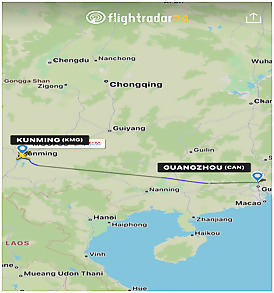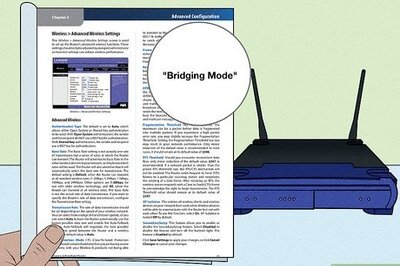
views
British Overseas Airways Corporation (BOAC) was the British state-owned airline that operated one of the first successful commercial airliners in the world in 1950s and ‘60s. It operated a ‘de Havilland Comet’ passenger jet. This airplane had a serious design flaw where because of its square windows, it started developing cracks around the corners of windows. This led to structural failures and explosive decompression at high altitudes, causing some of the worst crashes in the history of civil aviation.
The crash of Flight 781 and Flight 911 are worth remembering for the number of lives lost. BOAC took a similar approach as Boeing is taking now — an ‘Ostrich approach’, keeping its sights firmly on profits while allowing safety to take a backseat. Eventually, BOAC shut shop due to the shortcomings of ‘DH Comet’ airplane. Ironically, Boeing as a company and Boeing 737 as an airplane replaced the void that was left behind by DH Comet and BOAC. Looks like, years later, Boeing too is on the same path of self-destruction as BOAC.
The China Eastern Airlines Boeing 737-800 carrying 132 people (it was apparently carrying 18 pilots of the company who were headed to Guangzhou for their annual simulator training and a check ride) from Kunming to Guangzhou pitched down violently and crashed in the remote mountains of Wuzhou located in Guangxi Zhuang Autonomous Region. The crash started a major forest fire preventing fire fighters to look for survivors, in any case a remote possibility given the nature and manner of the crash. Following this crash, in the interim, DGCA India has put all Boeing 737 fleet on ‘enhanced surveillance’.

Source: Flightradar24
Boeing, as usual, responded quite callously via email stating, “We are aware of the initial media reports and are working to gather more information.” How insensitive of Boeing, not even offering condolences to the departed and stand in solidarity with the families of the departed! Aerospace industry analyst John Strickland was more worried about Boeing 737 Max returning to resume flights in China. He stated, “I wouldn’t expect today’s crash to have any bearing on the Max return to service in China.” Both these statements wouldn’t do any good for the image of Boeing, which has taken a huge beating in past couple of years. Not to mention its stocks plummeted as rapidly as the crashed aircraft by 5.3 per cent.
Of all versions of Boeing 737, 737-800 NG (same as the one that crashed) is claimed to be one of the safest among the Boeing 737 family. Not that Boeing 737-800 hasn’t crashed earlier, it has. In fact, the first crash was within few months of its delivery. Over 7,000 planes have been delivered since 1997, there have been 11 fatal accidents. Considering the number of flying hours this airplane has done, it has decent safety records among all modes of travel, worst being driving on the road. That’s right, mathematically, you are more likely to meet with an accident on the road than travelling by air.
Crash Analysis Using Data from Flight Radar 24
FlightRadar24 is a company that uses ADS-B (Automatic Dependent Surveillance – Broadcast) data that is broadcast by the airplane on an open frequency. It puts this data together in a nice user interface so that users can see this data in an intuitive manner. This data is sent out by the aircraft from its Air Data Computers (ADC) and other positional and speed information from the aircraft navigation system, including aircraft GPS. Given my air accident investigation experience and with the available data, this is what I have gleaned:
The plane was in an easterly direction, cruising along perfectly. Cruise is the time when pilots are more relaxed and have a lot of time to concentrate on navigation, watch aircraft systems pages, and once in a while munch something or have a cup of coffee. Suddenly, like a bolt from the blue at 2:20:59 pm it started its first fatal dive. From level flight, it reached a rate of descent rate of almost 31,000 feet per minute in about five seconds. This kind of descent, in my opinion, cannot be induced humanly (thereby discounting the aspect of attempted suicide) speculatively speaking, unless the aircraft had a major catastrophic failure like in the flight controls or flying surfaces like the tailplane/elevator.
Glimmer of Hope
There was some glimmer of hope that was seen at 7,425 feet. At this altitude, the airplane managed to arrest its death dive and, in fact, climbed back to 8,600 feet in about 10 seconds. This hope was short-lived; in a short span it resumed its death dive reaching 31,000 feet per minute with a speed of about 442 Knots (818 kmph) at an altitude of 4375 feet. As per last data transmission, it reached a speed of 376 Knots (696 kmph) at 3225 feet. In 1 minute 39 seconds after it began its dive, the aircraft crashed at around 2:22:36 pm in Wuzhou mountains.


Source: Flightradar24 (for graphic 2 and 3)
Recent crashes involving Boeing 737
The 737 MAX had just been in service for less than two years when 346 people died in two crashes: Lion Air Flight 610 on October 29, 2018, and Ethiopian Airlines Flight 302 on March 10, 2019. China was the first country to ground 737-MAX, soon other countries followed suit including the US. MAX was later re-certified in the US in December following adjustments, the plane hasn’t yet been used for commercial flights. In August 2020, I lost a friend and an Air Force colleague when an Air India Express flight (a Boeing 737) overran the runway in Kozhikode in pouring rain, killing 21 people.
Boeing’s Alleged Malpractice
The Federal Aviation Administration (FAA) certification of the MAX was investigated by the US Congress and multiple US government agencies, including the National Transportation and Safety Department (NTSB), the FBI, all and sundry. These investigations uncovered some glaring issues with Boeing as a company where quality control (QC) was compromised for a better ‘bottom line’ along with a string of design issues. Though MCAS (Maneuvering Characteristics Augmentation System) was projected the villain, issues uncovered were unrelated to MCAS. Some of the issues were with flight computers, faulty aircraft design, cockpit displays and the shoddy manner in which the software of MCAS was implemented.
What is laughable is Boeing had regulators in FAA certifying Boeing’s airplanes who were apparently on the payroll of Boeing. No wonder Boeing was found to be exerting “undue pressure” on its designated aircraft inspectors to issue certification in an accelerated manner to catch up with Airbus commercial aircraft sales which by then had overtaken Boeing’s by a great margin.
Need for Safety First
Boeing needs to seriously look at the way it is operating post-merger where the original culture of Boeing’s Safety First’ and diligent quality control have taken a back seat. Boeing needs to realise it owes more to its travellers than investors. Red ‘bottom Line’ is better than blood on your hands. The day Boeing makes these systemic changes, it could be back in business. Else, it is going down, the way BOAC went down ingloriously.
The author is Group Captain (retd), Fighter Pilot, MiG-21, Mirage-2000. He is DGCA-nominated Qualified Flying Instructor and Aircraft Accident Investigator. The views expressed in this article are those of the author and do not represent the stand of this publication.
Read all the Latest Opinion News and Breaking News here




















Comments
0 comment